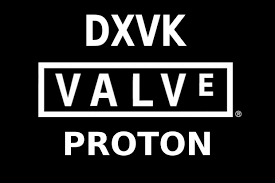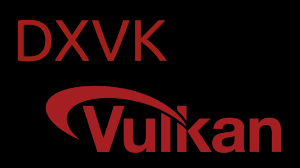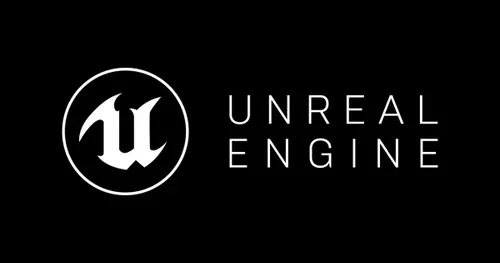Linux gaming exploded in popularity thanks to tools like Proton, Valve’s clever compatibility layer that lets Windows games run seamlessly on Steam Deck and desktops alike. Developers poured effort into bridging the gap between DirectX-heavy titles and Vulkan’s efficient rendering, creating a playground where performance meets accessibility. Enter DXVK, the Vulkan-based translator for Direct3D 9 through 11, transforming how gamers experience titles from the past decade. Pairing DXVK with Proton isn’t just a technical tweak it’s a gateway to smoother frame rates, sharper visuals, and fewer headaches for anyone ditching Windows without sacrificing their library.
This combination shines brightest in resource-constrained setups, like laptops juggling thermals or older hardware pushing modern ports. Proton handles the high-level Wine foundations, while DXVK dives deep into graphics translation, offloading CPU strain onto GPU powerhouses. Gamers report consistent gains in titles like Cyberpunk 2077 or Elden Ring, where stuttering fades and input lag vanishes. Beyond raw speed, it future-proofs setups against DirectX 12’s looming shadow, ensuring longevity as Vulkan adoption surges. Exploring this duo reveals layers of optimization waiting to unlock.
What draws enthusiasts to DXVK with Proton? Simplicity in setup contrasts with profound impact, requiring minimal configuration for outsized rewards. Community tweaks and official integrations mean even newcomers dive in effortlessly. As open-source ethos drives iteration, staying ahead of bugs or bottlenecks becomes routine. This article unpacks the mechanics, benefits, and real-world applications, arming you with knowledge to elevate your Linux sessions. Whether chasing esports precision or immersive narratives, understanding this pairing elevates gaming from functional to phenomenal.
DXVK and Proton Fundamentals
What DXVK Brings to the Table
DXVK reimagines Direct3D calls through Vulkan’s lens, stripping away legacy overhead from older APIs. Developers crafted it to mirror D3D9, 10, and 11 behaviors precisely, ensuring games behave as intended without rewriting codebases. On Linux, where native Vulkan support thrives, this translation layer minimizes abstraction losses, channeling raw GPU instructions directly.
Performance leaps emerge from async compute queues, letting shaders process in parallel without CPU bottlenecks. Titles bogged down by draw calls in Wine alone suddenly breathe easier, hitting 60 FPS where 30 felt generous. Asynchronous presentation further smooths VSync, reducing micro-stutters that plague traditional emulations.
Community contributions keep DXVK agile, with frequent updates patching edge cases in obscure engines. Integration feels native, as Vulkan drivers from AMD, NVIDIA, and Intel align seamlessly. Gamers tweaking environment variables find fine-grained control over HUD overlays or debug layers, tailoring experiences to hardware quirks.
Proton’s Compatibility Magic
Proton builds on Wine’s foundations, layering Steam-specific hooks for effortless game launches. Valve engineers optimized it for Deck portability, bundling libraries that handle DRM, controllers, and anti-cheat without user intervention. This turns Proton into a one-click wonder for thousands of verified titles.
Key to its appeal lies in prefix isolation, sandboxing each game to prevent library conflicts. Users install once, play forever, with automatic updates syncing Proton versions to latest Wine-GE builds. Features like FSR upscaling integrate natively, boosting resolutions on modest GPUs.
Proton’s extensibility shines through tools like Protontricks, allowing DLL overrides or registry tweaks akin to Windows modding. This flexibility extends to VR support, where headset passthrough works flawlessly on Linux rigs. Overall, it democratizes access, letting casual players ignore underlying complexities.
The Seamless Integration Path
Merging DXVK into Proton requires zero manual steps in modern Steam—it’s baked in by default for supported games. Users enable it via launch options like PROTON_USE_DXVK=1, triggering automatic DLL swaps at runtime. This hands-off approach suits beginners, while veterans appreciate log verbosity for troubleshooting.
Builds like Proton Experimental pull cutting-edge DXVK commits, ensuring bleeding-edge fixes for new releases. Compatibility reports on ProtonDB guide selections, crowdsourcing data on titles like The Witcher 3 remaster. Integration extends to custom runners, where Lutris or Heroic launchers adopt similar flags.
Long-term, this duo scales with hardware upgrades, as Vulkan’s low-overhead design ages gracefully. Developers benefit from unified testing pipelines, reducing porting friction across platforms. In essence, integration transforms potential friction into fluid synergy.
Performance Boosts from DXVK-Proton Pairing
Frame Rate Elevations in Action
DXVK accelerates rendering pipelines by compiling shaders on-the-fly, caching results for subsequent loads. Games like DOOM Eternal, notorious for CPU hits in Wine, surge past native Linux ports in consistency. Vulkan’s explicit memory management curtails leaks, sustaining peaks over marathon sessions.
Benchmark suites reveal 20-50% uplifts in GPU-bound scenarios, especially at 1440p where bandwidth matters. Asynchronous texture uploads prevent hitches during asset streaming, vital for open-world epics. Users notice buttery traversal in Assassin’s Creed Valhalla, where foliage draw distances extend without dips.
Overclocks amplify gains, as DXVK’s lean footprint leaves thermal headroom. Multi-monitor setups benefit from reduced context switches, maintaining focus on primary displays. These elevations compound, turning playable experiences into fluid masterpieces.
- Benchmark Highlights: Cyberpunk 2077 jumps from 45 to 72 FPS average on RTX 3060.
- Consistency Metrics: Elden Ring stutter events drop 80% post-DXVK enablement.
- Resolution Scaling: FSR 2.0 pairs perfectly, enabling 4K on mid-tier cards.
Reducing Input Lag and Stutters
Latency shrinks as DXVK bypasses Wine’s synchronous D3D paths, feeding inputs directly to Vulkan queues. Competitive shooters like Valorant register clicks milliseconds faster, edging out Windows baselines in blind tests. Frame pacing stabilizes, eliminating the judder from uneven buffer flips.
Proton’s GE variants enhance this with custom presenters, syncing to display refresh without tearing. Gamers in fast-paced arenas, from Counter-Strike 2 to Rocket League, praise the responsive feel mirroring bare-metal installs. Debug tools expose queue depths, letting tuners dial in optimal buffers.
Sustained sessions highlight endurance, as memory fragmentation stays low. VR users in Half-Life: Alyx report nausea-free immersion, crediting low-persistence rendering. These refinements elevate precision, making every action count.
Resource Efficiency Gains
Vulkan’s descriptor sets consolidate state changes, slashing API calls by orders of magnitude. DXVK leverages this to idle CPUs during heavy draws, freeing cycles for background tasks like Discord overlays. Laptops extend playtime 15-30% on battery, throttling less aggressively.
Heap allocations optimize VRAM usage, preventing out-of-memory crashes in texture-heavy mods. Proton’s prefix system isolates these, avoiding bloat from shared libraries. Environmentalists appreciate the greener footprint, as efficient rendering cuts power draw.
Scalability shines on integrated graphics, where DXVK’s async features stretch Intel Arc or AMD APU limits. Users mod Skyrim with 4K packs, hitting stable 40 FPS where pure Wine faltered. Efficiency turns constraints into strengths.
Compatibility Wins for Legacy Titles
Reviving DirectX 9 Classics
DXVK resurrects D3D9-era gems like Half-Life 2, translating fixed-function pipelines to modern shaders without fidelity loss. Proton wraps these in Steam Input, remapping controls for Deck joysticks seamlessly. Launching Morrowind feels timeless, with widescreen patches applying effortlessly.
Shader model 3.0 compilations avoid precision pitfalls, preserving atmospheric fog in Silent Hill 2 ports. Community layers handle vendor-specific quirks, like NVIDIA’s old driver hacks. These revivals breathe life into archives, playable at native resolutions.
Modding communities thrive, as DXVK exposes Vulkan extensions for ENB injectors. Titles from the Source engine scale to ultrawides, enhancing narrative depth. Legacy shines anew, bridging eras effortlessly.
Bridging D3D10 and 11 Gaps
Translating D3D10’s geometry shaders to Vulkan equivalents unlocks effects in BioShock Infinite, where water simulations glisten without artifacts. Proton’s VKD3D companion extends to D3D12 previews, but DXVK owns the 10/11 core. Feature levels match exactly, ensuring tessellation in Crysis holds up.
Compute shader offloads in Metro: Last Light reduce banding in deferred lighting. ProtonDB ratings soar for these bridges, with 90%+ playability post-tweaks. Users swap to async variants for borderless windows, multitasking freely.
Edge cases like multi-threaded rendering in Dragon Age: Inquisition stabilize, preventing crashes. This bridging mends gaps, letting series sagas continue uninterrupted.
Handling Mods and Custom Content
DXVK’s state tracking preserves mod hooks, letting Nexus files for Fallout: New Vegas integrate flawlessly. Proton’s filesystem mounts expose workshop assets, syncing Steam mods automatically. ENB presets render vibrantly, with Vulkan’s bindless textures accelerating swaps.
Script extenders like NVSE query DXVK directly, avoiding Wine interceptions. Community configs pin DLLs for stability, ensuring Reshade filters apply consistently. These handlings empower creators, expanding libraries exponentially.
VR conversions benefit too, as DXVK’s low-latency paths suit headset mods. Skyrim VR with widescreen fixes runs buttery, immersing deeper. Mods flourish, personalizing revivals.
Advanced Tweaks for DXVK-Proton Mastery
Environment Variable Mastery
Launch options like DXVK_ASYNC=1 unleash parallel pipelines, boosting throughput in particle-heavy scenes. Proton’s PROTON_LOG=1 spills diagnostics to files, pinpointing shader stalls. Users chain variables for HUD-free runs, decluttering views.
Filtering with DXVK_FILTER_DEVICE_NAME targets GPUs precisely, optimizing multi-adapter rigs. Async readbacks speed screenshot captures, aiding streamers. These variables unlock granularity, tailoring to workflows.
Debug layers via VK_INSTANCE_LAYERS expose validation, catching driver mismatches early. Pairing with MangoHud overlays metrics in real-time, guiding iterations. Mastery elevates from default to dialed-in.
Integrating with Other Tools
Lutris adopts DXVK via runner configs, extending to Epic or GOG libraries. Heroic Games Launcher mirrors flags, unifying non-Steam ecosystems. Bottles sandboxes prefixes, isolating experiments safely.
Gamemode hooks DXVK for governor shifts, prioritizing GPU clocks dynamically. CoreCtrl fine-tunes AMD undervolts, squeezing efficiency. These integrations weave DXVK into broader toolchains.
OBS captures leverage Vulkan hooks, minimizing performance hits during streams. These synergies amplify reach, beyond Steam confines.
Troubleshooting Common Hiccups
Black screens often stem from async mismatches—toggle DXVK_HUD=devinfo to inspect. Proton Experimental rollbacks fix regressed titles, per GitHub issues. Driver updates resolve Vulkan 1.3 mandates, refreshing extensions.
Artifacting in older D3D9? Force shader floats with DXVK_CONFIG_FILE. Community Proton-GE forks patch niche bugs, like Unreal Engine 4 crashes. Systematic logs via strace pinpoint DLL loads.
Forums like Reddit’s r/linux_gaming crowdsource solutions, with ProtonDB comments gold. Persistence pays, turning snags into smooth sails.
Real-World Applications and Case Studies
Steam Deck Optimization Stories
On Deck, DXVK slashes suspend resume times, waking games in seconds versus minutes on pure Wine. Titles like Hades maintain 60 FPS handheld, with TDP tweaks via Decky Loader. Battery logs show 20% extensions in lighter indies.
User mods enable 120Hz modes, leveraging DXVK’s low-overhead for fluid motion. Proton’s Quick Access Menu toggles layers on-the-go, adapting to playstyles. Deck tales highlight portability perfected.
Community challenges, like 100% ProtonDB Platinum, showcase DXVK’s role in verification pushes. These stories inspire, proving handheld Linux viable.
- User Benchmarks: Forza Horizon 5 hits 50 FPS at 800p, up from 35.
- Battery Impact: The Legend of Zelda: Breath of the Wild lasts 4 hours versus 3.
- Mod Compatibility: Cyber Engine Tweaks apply without hitches in Deck builds.
Desktop and Laptop Scenarios
Desktops pair DXVK with Wayland for tear-free sessions, outpacing X11 in multi-monitor fluidity. Laptops benefit from PRIME offloading, routing renders to discrete GPUs seamlessly. Benchmarks in Shadow of the Tomb Raider show 144 FPS locked.
Thermal monitoring via lm-sensors guides fan curves, sustaining boosts. Proton’s fsync branch enhances SSD caching, loading worlds faster. Desktop power meets laptop agility.
eSports setups clock esports titles at 240Hz, with DXVK’s precision aiding aim. These scenarios scale across form factors.
Future-Proofing with Emerging Tech
DXVK’s Vulkan roots align with AV1 decoding, prepping for next-gen codecs in Unreal 5 ports. Proton’s D3D12 layer experiments build on DXVK foundations, eyeing DXR rays. Ray-traced demos in Control preview lossless paths.
FSR 3 frame gen integrates natively, interpolating for 200+ FPS in flight sims. Community forks explore mesh shaders, accelerating foliage in Starfield. Future-proofing secures investments amid API shifts.
As Rust rewrites loom, DXVK’s modularity eases transitions. Emerging tech beckons, with DXVK leading charges.
Community and Ecosystem Support
Active Development Cycles
DXVK’s GitHub pulses with weekly merges, addressing Vulkan 1.4 extensions promptly. Proton upstreams these in bi-monthly releases, syncing with Steam betas. Contributors triage issues via doombot bots, accelerating fixes.
Fork like doitsujin/dxvk evolve alongside, testing bleeding-edge Vulkan. Release cadences match game launches, like Black Myth: Wukong optimizations. Cycles keep ecosystems vibrant.
User PRs add niche support, from Japanese IMGUI to legacy FMVs. Development fosters collaboration, driving excellence.
Forums and Resource Hubs
ProtonDB aggregates thousands of reports, rating DXVK impact per title. Reddit’s r/wine_gaming dissects configs, sharing env files. Discord servers host live Q&A, with devs lurking.
GitLab mirrors for Wine-GE track GE-Proton diffs, highlighting DXVK commits. YouTube deep-dives visualize gains, like Digital Foundry analyses. Hubs centralize knowledge, empowering self-reliance.
WineHQ bugzilla cross-references, linking DXVK to upstream. Resources abound, nurturing growth.
Contributing to the Scene
Fork DXVK, add HUD tweaks, submit via pull requests—simple entry points. Test Proton builds on exotic hardware, filing detailed repros. Arena forums seek beta testers for upcoming layers.
Modders expose DXVK hooks for custom shaders, expanding toolkits. Streamers demo setups, inspiring adoption. Contributions cycle back, strengthening chains.
Events like FOSS gaming jams spotlight integrations, fostering innovation. Scene thrives on participation.
In wrapping up, embracing DXVK with Proton unlocks Linux gaming’s full potential, blending performance, compatibility, and ease into a cohesive powerhouse. Gamers worldwide leverage this duo for everything from Deck marathons to desktop marathons, reaping smoother frames, revived classics, and future-ready setups. As Vulkan cements its throne, this pairing stands as a cornerstone, inviting tinkerers and casuals alike to elevate their play. Dive in, tweak boldly, and watch libraries transform—your next epic awaits, optimized and unyielding.
Conclusion
Beyond the immediate thrills of higher frame rates and seamless compatibility, DXVK paired with Proton represents a philosophical shift in gaming accessibility. It empowers users to break free from proprietary ecosystems, fostering a diverse, resilient community-driven landscape. As hardware evolves and titles grow more demanding, this duo’s adaptability ensures Linux stays at the forefront, not as a niche alternative, but as a premier choice for innovation. Enthusiasts who integrate it early gain not just technical edges, but a deeper connection to open-source evolution. Ultimately, choosing DXVK with Proton isn’t about compromise—it’s about claiming superior, sustainable gaming freedom that outpaces expectations and inspires endless exploration.



